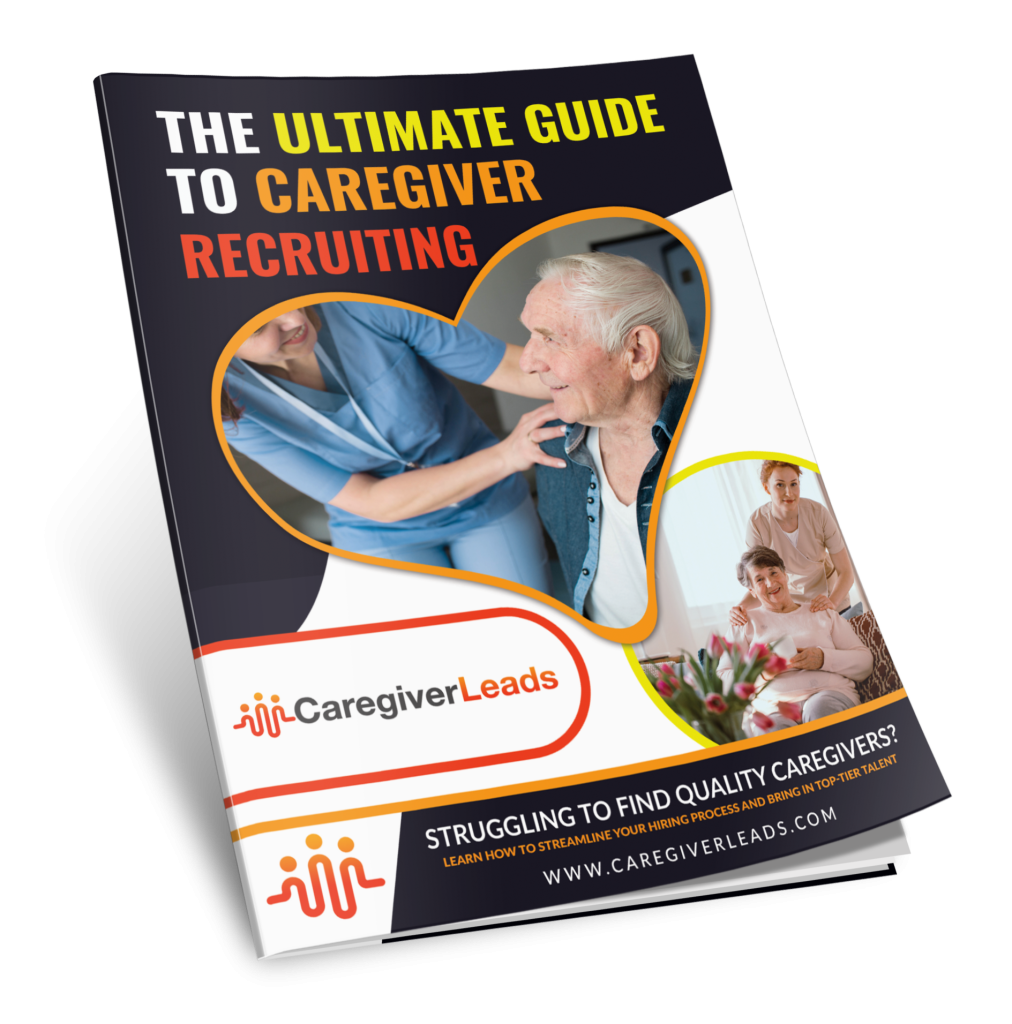Recruiting caregivers is one of the biggest challenges agencies face today. Finding skilled and dependable caregivers shouldn’t drain your budget or need spending hours at crowded job fairs. While traditional recruiting methods may seem helpful, they often bring low turnout, poor applicant quality, and minimal follow-up. The result? More time is wasted on interviews with unqualified applicants and not enough progress in filling open caregiver positions.
The good news is that caregiver recruiting doesn’t have to be complicated or time-consuming. By adopting smarter strategies, agencies can attract up to three times more qualified caregiver applications while avoiding the frustration of sorting through applicants who aren’t a good fit. A strong caregiver recruiting process means fewer no-shows, less wasted effort, and better results.
1. Build a Clear and Consistent Caregiver Recruiting Strategy
The first step to reducing wasted time in caregiver recruiting is creating a clear, consistent strategy. Too often, agencies rely on one-time job postings or occasional hiring events, which bring in inconsistent applicants and leave large gaps in the hiring process.
A caregiver recruiting strategy should be ongoing and structured. By setting up a continuous system, you’ll always have a steady flow of caregiver applications to review. Instead of rushing to fill urgent openings, you’ll have a pool of qualified candidates ready when positions become available.
A consistent approach also helps filter out unqualified applicants. When expectations are clear and job descriptions are well-written, the applicants who respond are more likely to fit your agency’s needs.
2. Write Strong Job Descriptions That Attract Qualified Caregiver Applications
One of the main reasons agencies waste time on unqualified applicants is unclear job descriptions. A vague or generic posting invites anyone to apply, regardless of their skills or interest in caregiving.
To attract the right caregiver applications, your job description should do more than list tasks. It should explain:
- Your agency’s mission and values.
- The benefits of working with your team, such as flexibility, training, or career growth.
- The type of caregiver you are looking for, including any specific skills or certifications, is important.
- The impact caregivers have on clients and families.
When caregivers feel a connection to your agency’s purpose and see real benefits in applying, you are more likely to receive applications from serious, qualified candidates. Agencies that invest in better job postings often see two to three times more relevant caregiver applications without spending additional money.
3. Use Smart Systems to Save Time in Caregiver Recruiting
Sorting through applications manually can take hours and if most applicants aren’t qualified, that time is wasted. To avoid this, agencies should focus on using systems that simplify recruiting and improve efficiency.
With the right processes in place, you can:
- Automatically screen applicants to filter out those who do not meet minimum requirements.
- Organize caregiver applications in a central system to review them more efficiently.
- Send automatic responses and reminders to applicants, reducing no-shows and delays.
These strategies allow you to spend more time interviewing the right people and less time chasing unqualified leads. Caregiver recruiting becomes a streamlined process rather than a stressful task.
4. Focus on Quality Leads, Not Just More Caregiver Applications
Many agencies make the mistake of focusing only on the number of caregiver applications rather than the quality of those applicants. While it may feel good to receive a high volume of applications, it doesn’t help if most of them aren’t a fit for your agency.
By targeting the right caregivers from the beginning, you’ll save significant time in the long run. Instead of conducting interviews with applicants who aren’t qualified, you’ll be meeting candidates who have the skills and motivation to succeed.
This not only improves your hiring process but also reduces turnover, since caregivers who are better aligned with your agency’s mission tend to stay longer.
5. Engage Past Applicants and Build a Caregiver Talent Pool
One of the best ways to reduce wasted time is to revisit past caregiver applications. Many agencies overlook applicants who weren’t hired before, but often, these individuals are still interested in caregiving opportunities.
By maintaining a caregiver talent pool and staying connected with past applicants, you create a ready-made group of candidates who already know about your agency. When positions open up, you can quickly reach out to this pool instead of starting the process from scratch.
This not only saves time but also helps ensure a more consistent flow of qualified caregiver applications.
6. Encourage Employee Referrals for Quality Caregiver Applications
Your current employees can be one of your strongest recruiting tools. Caregivers often know others in the field who would be a good fit for your agency. Encouraging employee referrals can bring in applicants who are both qualified and pre-vetted by someone you trust.
Referred caregivers often have higher success rates because they already know what to expect from the job. They are more likely to be reliable, motivated, and aligned with your agency’s culture. By creating a simple referral process, you can increase the quality of your caregiver applications without spending extra time or money.
7. Leverage Caregiver Leads CRM for Smarter Recruiting
With Caregiver Leads, agencies can go beyond traditional recruiting by leveraging a complete CRM built for caregiver hiring. Using powerful GHL features, every applicant is automatically captured through custom lead forms, tracked in a central dashboard, and instantly segmented based on qualifications. Automated follow-ups ensure no qualified lead slips through the cracks, while ongoing text and email nurturing campaigns keep caregivers engaged until they’re ready to commit. This streamlined system not only saves recruiters hours of manual work but also builds stronger relationships with applicants, ultimately turning more leads into dependable hires.
Final Thought
Recruiting caregivers doesn’t have to mean wasting hours on unqualified applicants. By building a consistent recruiting strategy, writing clear job descriptions, using smart systems, focusing on quality leads, engaging past applicants, and encouraging referrals, agencies can significantly improve their hiring process.
The best way to recruit caregivers is not about doing more, it’s about doing it smarter. With the right approach, you can attract up to three times more qualified caregiver applications, reduce turnover, and fill positions faster all without increasing your budget.
Ready to Recruit Qualified Caregivers Faster?
If you want to stop wasting time on unqualified applicants and start building a steady flow of caregiver applications, visit Caregiver Leads today to learn how you can improve your recruiting process.
FAQs
- Why do agencies often receive unqualified caregiver applications?
Vague job postings and inconsistent recruiting strategies attract applicants who may not meet the necessary skills or requirements.
- How can job descriptions reduce wasted time in caregiver recruiting?
Clear, detailed job descriptions set expectations and attract caregivers who are a better fit, resulting in fewer unqualified applications.
- What role do systems play in caregiver recruiting?
Smart systems help screen applicants, organize caregiver applications, and streamline communication, saving time and improving efficiency.
- Why should agencies revisit past caregiver applications?
Past applicants are already familiar with your agency and may still be interested in caregiving opportunities, making them a valuable talent pool.
- Are employee referrals effective for recruiting caregivers?
Yes. Employee referrals often bring in qualified, reliable caregivers who understand the job and align with your agency’s culture.



